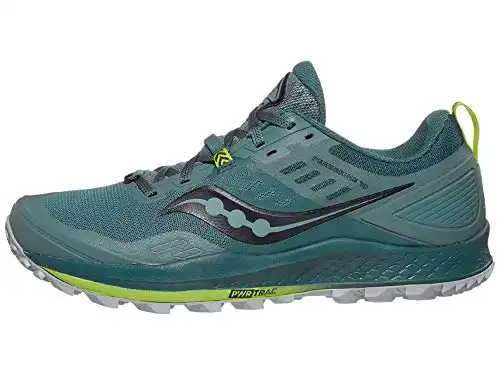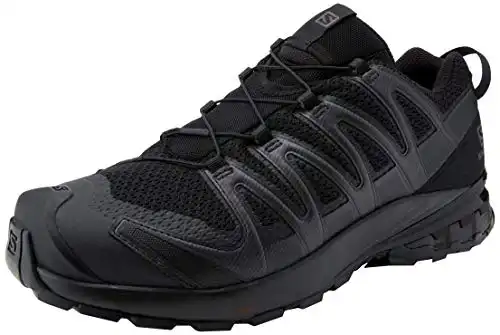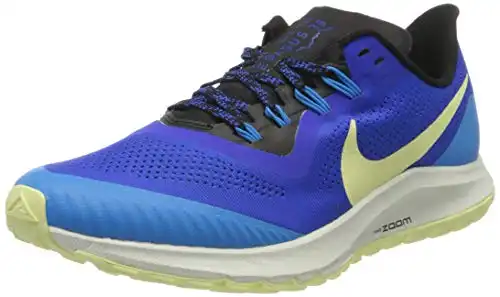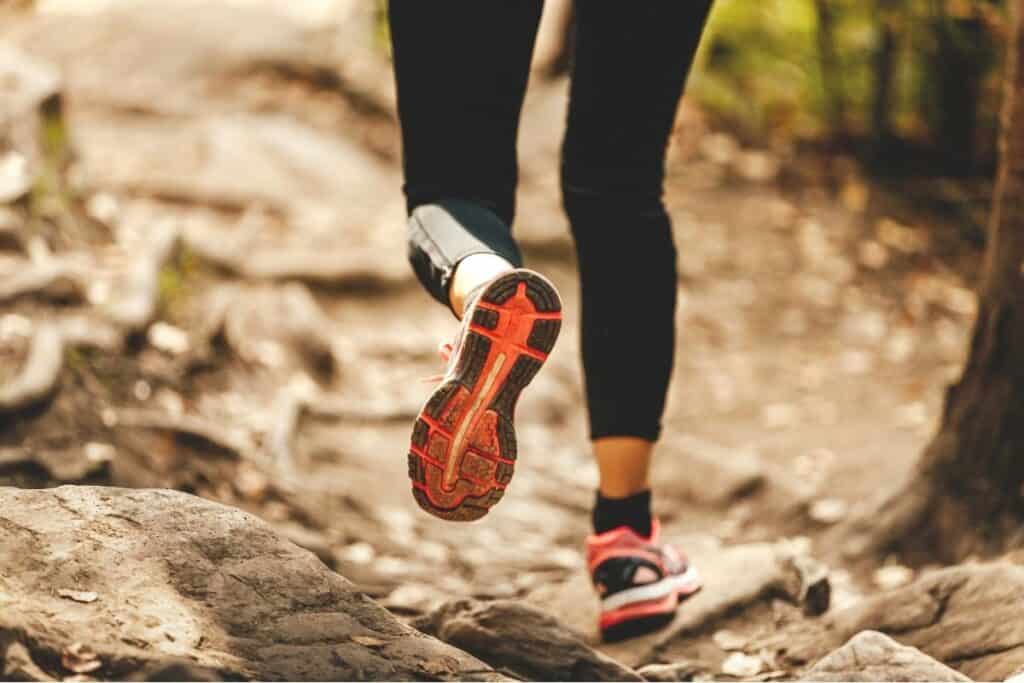
If you’re new to hiking and just getting started then you may find yourself wondering if you can hike in running shoes. Hiking is just a walk in the woods – so why not?
Running shoes are best suited to easy and moderate hikes where sharp rocks or poor weather are not expected. If you will be carrying a heavy backpack or expect bad weather or rough terrain then you will be better suited to wearing hiking-specific shoes.
Before calling it a day, let’s take a look at all of the advantages and disadvantages to wearing running shoes on a hike.
Advantages to Hiking in Running Shoes
These days, many hikers turn to running shoes as a simple alternative to the big, clunky boots of the past.
But why? Why choose a pair of shoes that’s not made for what you’re doing?
The answer comes down to a combination of comfort and convenience but can also have a lot to do with mobility.
Next time you put on your big pair of hiking boots, try stomping around in them for a little bit. The first thing you’ll likely notice is the racket they make!
Hiking boots are made from durable, high-quality material, manufactured to last. Because of this, they often weigh a lot more than your average casual shoe.
Some hikers say that they much prefer the feathery glide of their tennis shoes over their hiking boots’ weight for shorter hikes. Sure, a pair of running shoes may not be as durable for bad weather or longer hikes, but they’re not a problem at all for a short easy one!
Tired calves make for more challenging hikes, and some hikers don’t want a grueling experience every time they go out into the woods. So, they choose running shoes over hiking boots.
Because of their more rigid construction, hiking boots can feel tight on long hikes when your feet swell. By comparison, running shoes have a little bit more give that can help provide great comfort to the foot.
Running shoes are the perfect solution because their light, flexible fabric allows them to expand as the wearer’s feet grow. Instead of claustrophobic, achy feet, wearers report a tremendous amount of comfort.
Running shoes might even increase mobility because of their lightness and flexibility. If you don’t like how your hiking boots wobble across stones and roots, maybe the elasticity of running shoes would fit you better.
Last but not least – it’s worth pointing out that many of us already own running shoes. This means that hiking boots are one less purchase that you’ll need to make when getting started!
Disadvantages to Hiking in Running Shoes
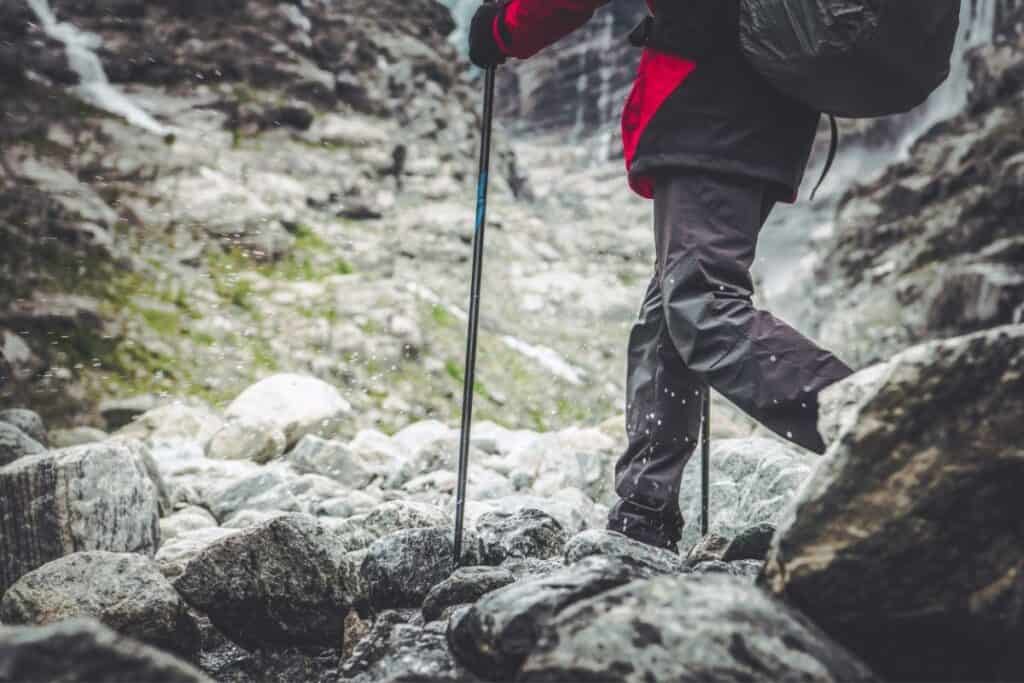
While there are certain advantages to wearing running shoes for hiking, they also have some disadvantages as well.
For one, hiking boots are far more durable than running shoes.
Hiking boots are specially made to withstand the harsh conditions of the trail. From variable temperatures to wading through rivers all the way down to sunbathing for hours, hiking boots are made to handle anything that they encounter on the trail!
Running shoes, in contrast, are made for joggers and marathon runners. Sure, in the case of marathon runners, they’re made to last. But, they’re made to last on even, flat terrains like trails and paved roads.
If you’re planning on hiking the full Appalachian trail, you’d be wise to leave your running shoes at home!
Additionally, hiking boots provide ankle stability that most running shoes just can’t match.
Lacing up your hiking boots is a lot like putting on an ankle brace. Sure, putting the laces through all those holes is annoying, but the support it grants can prevent ankle injuries and increase rough terrain stability.
In comparison, the flexibility of running shoes might lead you to roll an ankle on an awkwardly placed stone or root.
So, if you need stability, you need hiking boots.
A lot of stability depends on your body type and what you’ll be carrying, and a lot of this goes back to how far you’re hiking.
If you’re a heavier person with more body to carry around, the added weight can put stress on your ankles. If you’re older and have weaker ankle-muscles, you might also be at risk.
Long hikes require more supplies, which means big, heavy backpacks, and enormous strain on your legs. For this, a little added stability would be a huge help.
So, running shoes are at a disadvantage for people who need added stability or for longer hikes. If you’ve got weak ankles, hiking boots help!
Another often forgotten aspect of hiking shoes/boots is the added foot protection that they provide. Many have thick soles and/or rock plates that help protect the bottom of your foot from sharp rock edges.
By comparison, running shoes are built to run on largely smooth surfaces and provide little protection. While you can simply avoid stepping on sharp surfaces to some degree, it’s sometimes harder said than done after a long hard day on the trails.
These stiff soles and rock plates also add stability to assist you when traversing unstable and steep terrain. Believe me when I say that having a bad spill on a rock field is not the place that you want to be in!
Finally, keep in mind the little critters.
In my home state, we’ve got two varieties of venomous snakes. They often like to sit out on the trail where the sun shines or hide under rocks where the hawks can’t get to them.
A venomous snake in either place can pose a mortal threat to unwary hikers- and let’s admit it- you get a little unattentive when you’re tired.
For situations like these, a little ankle protection can be the difference between life and death. The security that a high-ankled pair of boots with sturdy materials provides works well for hikers who want to lower their chances of being bit by a snake.
So, although running shoes are an adequate solution for hikers who like comfort, more serious hikers might be better off with a pair of special-made hiking boots than a pair of Nikes. The key is to assess your hiking tendencies and ask yourself what advantages you need.
Best Running Shoes for Hiking
Although most running shoes will be just fine for easy hiking, some are better than others.
Traction is a significant consideration when asking which shoes you should hike in. Not having traction on a steep rock face or a hill can cause complications and even severe injuries. For this reason, you’ll want to look for shoes that have a more aggressive tread pattern.
Ironically, more expensive and flashy shoes are often more cheaply made. When you’re looking for a pair of running shoes to hiking in, you should consider how long your shoes are likely to last. Are they made for the trail or the runway?
Finally, cooling your feet can be a massive advantage if you want to go on longer hikes. Uncomfortable feet need resting, and resting can mean a mile or more off your distance goal for the day. Cool, breathable shoes can help keep you going!
Now while these are all things to look for in “regular” running shoes – there’s actually a special hybrid shoe made that blends the best of both worlds here.
All of these advantages are combined in a specially-made outdoor shoe called the trail runner.
Trail running shoes are specially-made to withstand the trail’s harsh conditions while keeping the wearer comfortable and satisfied.
Here are a few comfortable brands of trail runners, perfect for hikers who want to combine comfort and utility.
On the more expensive side of things, we have the Salomon XA Prod 3D 8. These shoes are made for high-mileage trips and have cushioning to keep the soles of your feet comfy. They’re a durable, dependable solution for the problem of uncomfortable hiking shoes.
This updated version of the iconic XA PRO 3D is lighter and softer, while retaining all the essentials benefits of the original (stability, cushioning and grip). Featuring Contagrip premium wet compound and an improved 3D chassis, this shoe effortlessly accompanies you wherever the trail takes you.
If you want something that’s a little cheaper, the then the Nike Pegasus may be your best bet. Many say that they can feel identical to a regular sneaker on rough terrain.
They’re breathable, durable, and they have a seamless interior to minimize rough material against tender feet. They’re also designed with weight in mind, meaning less stress on your calves and ankles.
If you want a shoe that will take you a long way while not breaking the bank, the Pegasus can do that for you!
The Nike Pegasus Trail delivers durability and responsiveness to runners, trail athletes and outdoor enthusiasts. Versatile enough for your everyday miles, it features an ideal fit with plush cushioning and tough traction!
However, these shoes aren’t made for rougher, more technical terrain. They’re trail shoes, to be sure, but you’re better off taking them out on soft dirt trails or gravel.
Running Shoe Wrap-up
While running shoes work for hikers, not all hikers find them to be the best solution to their needs. If you need stability and serious durability, a pair of hiking boots is best.
But, if you want comfort and breathability on shorter hikes, running shoes work fine. Try buying a pair of trail runners for an in-the-middle solution to this debate!
Before going, make sure to take a look at these other related articles that should also be helpful.

